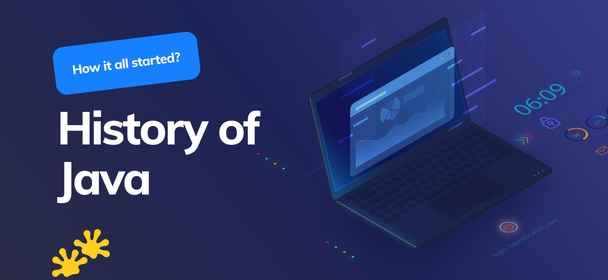Java vs Python
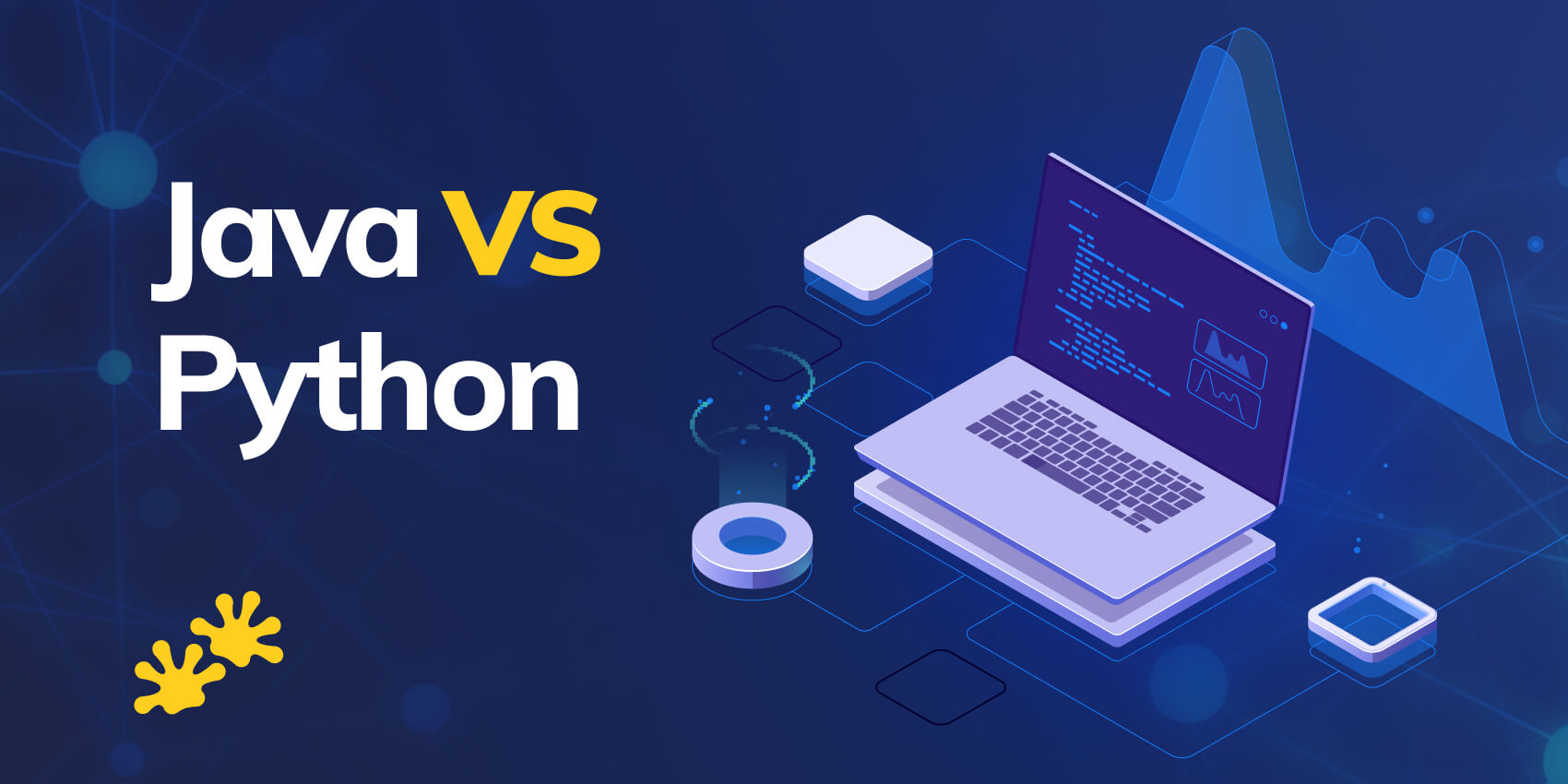
Java
At the time of writing, the TIOBE index places Java language at the second place of their list and Python is behind on a third position. Java has had a profound impact on how the present world looks and it’s over 25 years old, to put that into perspective in most European countries you must be over 18 years old to drink a beer.
Java is a general-purpose programming language used mostly for developing a wide range of applications from mobile to enterprise apps. It was well-received by developers in the software development community, in particular, because of the principles like Robust, Portable, Platform Independent, High Performance, Multi-Thread, and the “Write Once, Run Anywhere” philosophy. If you want to get more knowledge about the History of Java just read our article here.
Python
Python language is a high-level, interpreted, interactive, and object-oriented scripting with dynamic semantics, used for general-purpose programming. It is worth adding that at the time of writing this article it is placed under the number 3 in the TIOBE index.
From the 2000s, we can observe an exponential increase in the amount of data that companies store, track, and manage. This data-driven approach gave new opportunities and resulted in many B2B and B2C applications developed in the start-up world during this time.
Large technology companies such as Google, Netflix, or Facebook became the pioneers in the field of machine learning and data science. Tools developed by these companies using Python programming language, especially in case of solutions like TensorFlow, that helped Python with becoming what it is today.
Popularity of programming language Python
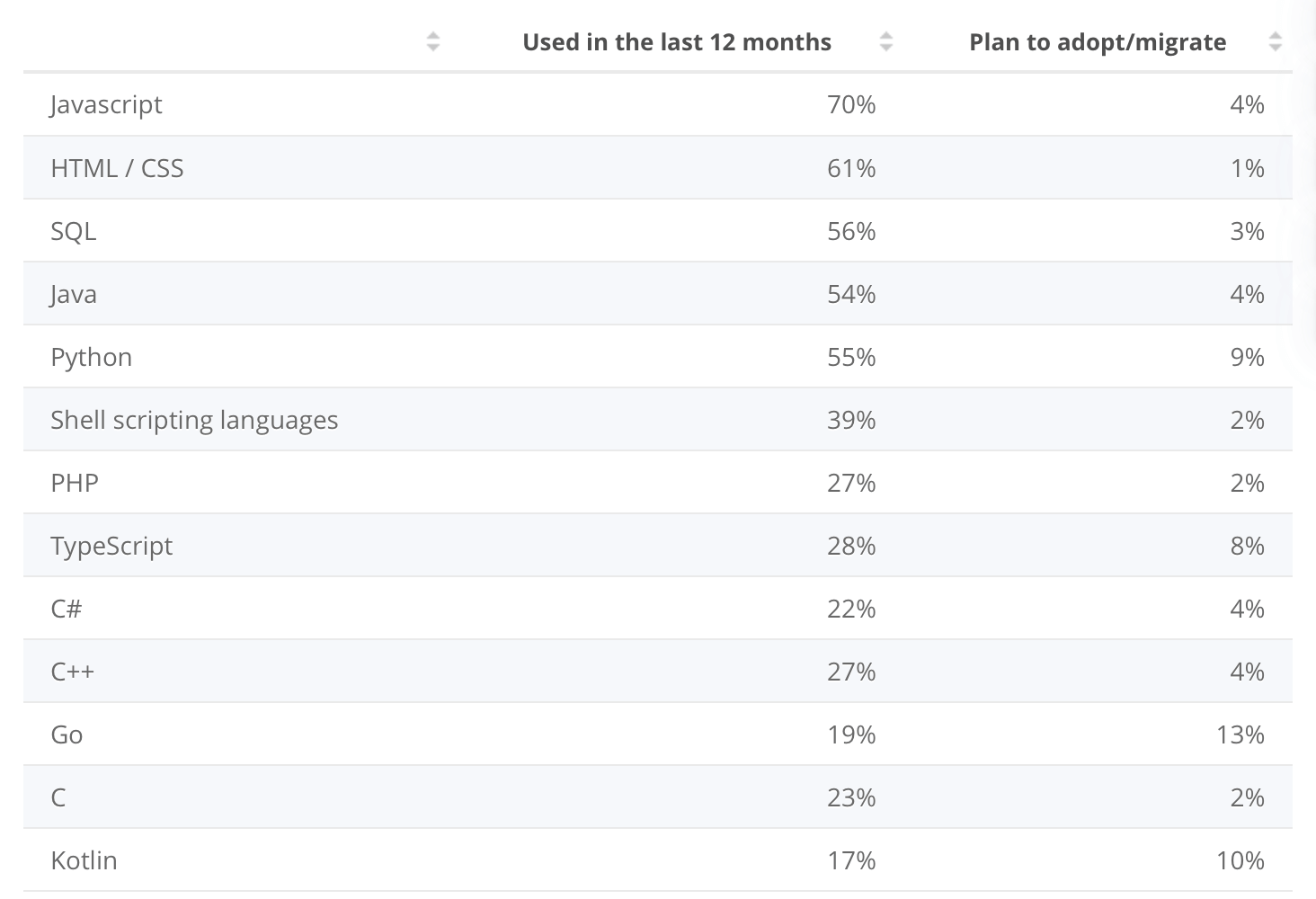
You can check the source here
Popularity has always been a game between these two languages, both have large communities surrounding them, and both are open source. This means that coders are constantly fixing bugs and contributing to them, making both good coding options for the future. Java programming language is reflected as a popular choice by many developers, even though the gap between both languages has reduced significantly, so now it’s hard to decide which one is more popular.
Let’s say that Python popularity is growing constantly according to Github Octoverse. Just a couple of years ago, Python was in fourth place. The impressive growth in popularity is likely a result of becoming the language of choice in the case of Machine Learning and AI, especially by the growing popularity of frameworks like TensorFlow and the support of the big players like Google or Netflix.
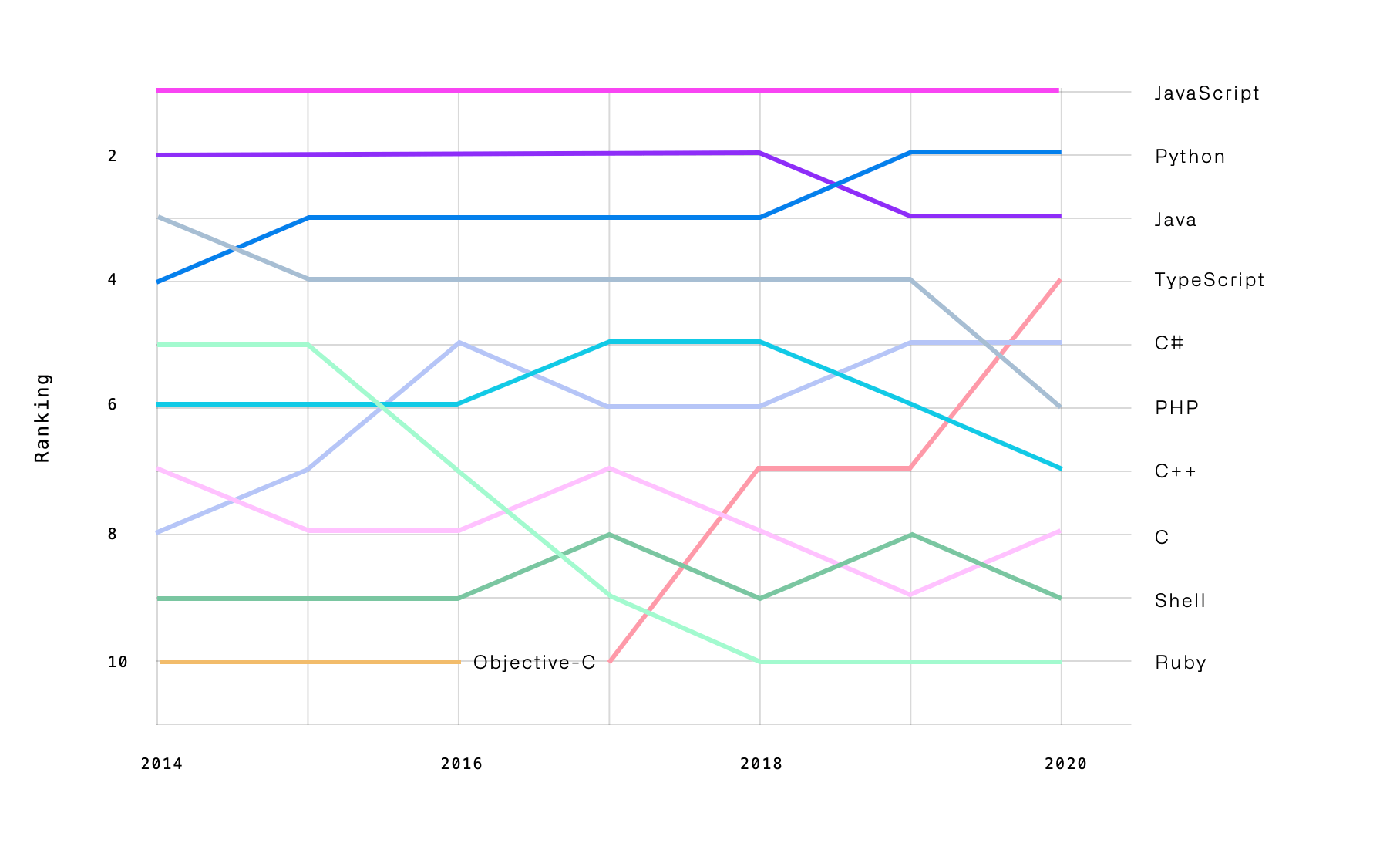
You can check the source here
Java and Python have a close number of searches in Google, which makes them almost equally popular in the development arena. So, if you are looking to develop your custom software using these programming languages it won’t be the wrong choice for sure, the main question will be “What is that app for?”. For example, if you’re a data scientist working on a machine-learning project, then Python might be the best choice. Java is still quite popular but in Data Science Python is unbeatable.
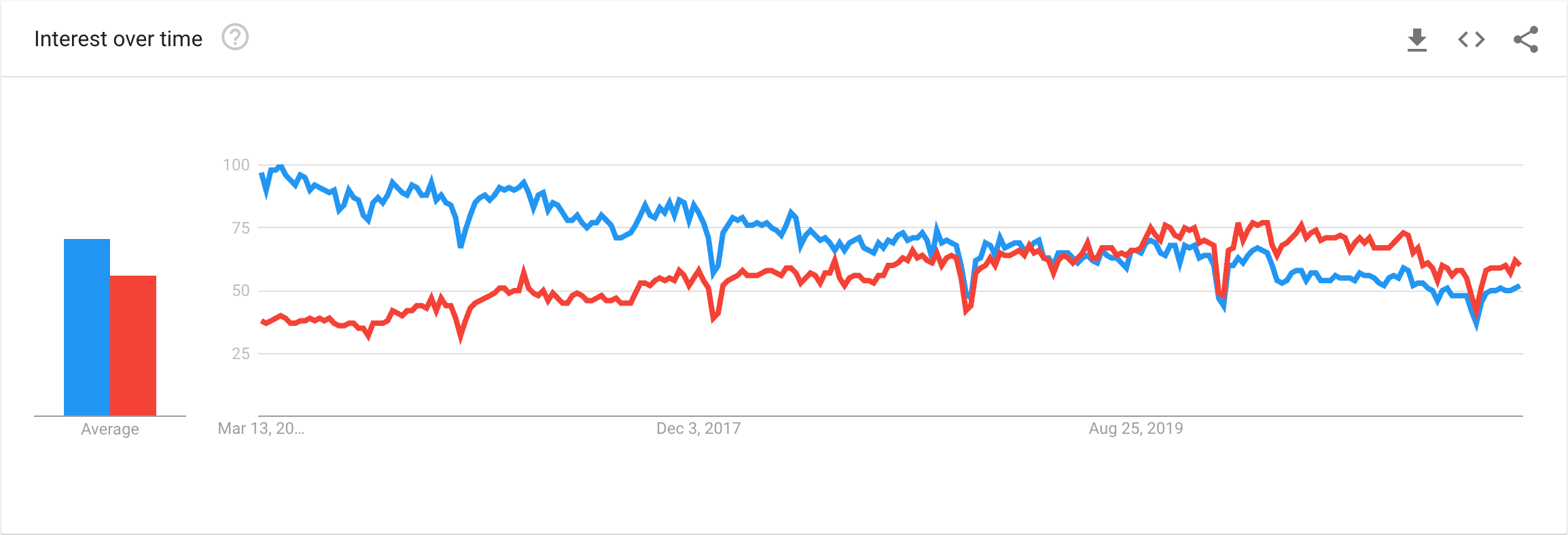
You can check the source here.
Blue for Java, red for Python.
While not as trendy as it once was, Java is still one of the most popular programming languages. On the other hand, Python’s growth has been astronomical and this trend is not going to stop in the following years.
Community Support
As we mentioned before, Python and Java are one of the most popular languages and have quite big communities. It is pretty important in development, to have huge community support for a language. It can help you with getting needed solutions or advice for coding-related problems or issues. Java has a large community, partially due to its popularity, but the main reason is the versatility that Java can offer.
Java is also widely used amongst large-scale enterprises which means that for now, it has a greater base for business-oriented developers. Why for now? Since Python’s popularity is growing every year with new major players like Google, Instagram, or Netflix contributing to its development it’s a matter of time when it will offer as much as Java.
Java developers have also Java User Groups (JUG), which are some of the most popular coding communities in the world. They also have various high-profile events like JavaOne. Meanwhile, Python has 1,637 user groups in 191 cities and 37 countries with more than 860,000 members. The language has all types of events, including PyCon and PyLadies for women to meet and code together.
Code structure
Java and Python have many similarities, especially their “(nearly)everything is an object” design and their simplicity due to excellent cross-platform support, besides that, both languages have extensive standard libraries. Python is a dynamically typed object-oriented programming language, when you write it, you don’t need to determine variable types, as the interpreter will infer these types. This results in an easier syntax that is quite similar to the English Language, which was also one of the goals for Python creators.
There are some big differences also, let’s take a look at the community, Java has always had a single large corporate sponsor, initially it was Sun Microsystems, which was later purchased by Oracle. Python started as a project at University and then went open source, which means that the support is more distributed.
‘Hello, World!’ in Java and Python
Let’s check how “Hello, World!” will look like in the case of Java:
public class HelloWorld {
public static void main(String[] args) {
System.out.println("Hello, World");
}
}
And now same thing in Python:
print ('Hello, World!')As you can see Python simplicity is visible from the start, but it does not mean that it is better than Java. The mission of Python was to be as close as possible to natural language and we can say that this promise is fulfilled. You can read more about the History of Python here.
Example of a class in Java and Python
Now let’s implement the same class, both in Python and Java to illustrate the differences between them. First, assume that we have the following Book class definition in Java, by convention most names in Java use a mixed case. Class names begin with an uppercase letter, in case of variables and functions names begin with a lowercase letter:
public class Book {
private String author;
private String title;
private int year;
public Book(String author, String title, int year) {
this.author = author;
this.title = title;
this.year = year;
}
public String getAuthor() {
return author;
}
public String getTitle() {
return title;
}
public int getyear() {
return year;
}
}Java code classes are defined in files named the same as the class. This means that you have to save this class in a file named Book.java. There is a limitation of one class per file, now, a similar Book class in Python, it’s worth adding that there is no universally-accepted Python convention for naming classes, variables, functions.
class Book:
def __init__(self, author, title, year):
self.color = author
self.model = title
self.year = year Python provides possibility to declare class anywhere, at any time, in any file.
Simple counter
In this example we’ll take a look at code differences in case of initializing an integer to zero, then converting it to a string, then checking if it is empty. Code will look as fallow in Java:
int myCounter = 0;
String myString = String.valueOf(myCounter);
if (myString.equals("0")) ...
// print the integers from 1 to 5
for (int i = 1; i < 5; i++)
{
System.out.println(i);
}
Let’s do same thing in Python:
myCounter = 0
myString = str(myCounter)
if myString == "0": ...
#print the integers from 1 to 5
for i in range(1,5):
print i
As you can see differences are pretty much visible, so as you can assume in the case of Java it’s easier to accidentally make some mistake and constitute a severe error in the code. We can frankly say that bug fixing in Java takes much more time than it takes in Python. In the case of not experienced developers, it can cut your productivity by half or more. Java syntax looks much more formal. As for human languages, this typically means that it is more difficult to write/speak by much easier to read/listen/understand.
Technically, Python has another control - indentation. The requirement for correct indentation is the same in Java as it is in Python because in both languages correct indentation is aimed at making human-readable code. The Python interpreter automatically enforces correct indentation, whereas the Java compiler does not.
The scope of a Java conditional or looping statement is basically the next statement. Indentation is ignored by the compiler, if multiple lines are going to be included, the scope must be delimited by curly braces ({ , }).
Performance
Both Java and Python are run by compiling the bytecode and running them on virtual machines. This makes both languages cross-platform, with no operating system differences. It might seem that both have similar performance, but there is one big difference between them.
Java comes with Just-in-time Compiler(JIT), its role is to compile the bytecode into the native machine code in real-time, as well JVM can call the compiled code directly. Since compiling code is not interrupted, that can help with the speed and efficiency of the development environment.
However, in the case of Python, codes are interpreted based on the variable time which slows down the pace of compilation during runtime. This has reduced the speed and efficiency of the language.
But to be totally honest, languages don't have speed, they have semantics. If you want to compare speed you must choose specific implementations to compare with each other. That means that there is no good answer in case of a question which one is faster. There is no good answer as Python and Java are both specifications for which there are many different implementations. Python got Jython, CPython, IronPython, and PyPy and that is just a piece of useful Python implementations out there.
For Java, there is the HotSpot VM, OpenJRE as well as many others. Jython generates Java bytecode, so under specific circumstances, it uses more-or-less the same underlying Java. CPython implements quite a handful of things directly in C, so it is very fast, but then again Java VMs also implement many functions in C.
To get a straight answer the best way is to measure on a function-by-function basis and across a variety of interpreters and VMs in order to make any reasonable statement, but there still is a problem in the case of the final product, it is always a case of the particular implementation. Sometimes, the differences between Java and Python can come out to be very significant. A simple binary tree test, for example, can run ten times faster in Java than in Python.
Backward compatibility and Legacy Systems
In programming language evolution, it is common to maintain backward compatibility indefinitely. In the case of Java, there were many changes implemented in the first few years of Java Development, but since Java 1.1 and 1.2 Java compatibility has become possible to achieve. Java 1.2 code will compile under Java 8, and Java 1.2 binaries will run on the Java 8 VM. Source code written against the original JDK like version 1.2 will still compile and run successfully today, and to point that out, without any changes!
This is not the case with Python. Python 2 arrived in 2000 and Python 3 that is used today hit the scene in 2008. Python 3.0 is the first intentionally backward-incompatible Python release.
It is caused by features that may be considered as breaking backward compatibility but their role was to improve the language at the same time. For example, Python 3.9 changed the default protocol in the pickle module to Protocol 4 which was first introduced in Python 3.4 can be used in fast-moving projects where security and history are not in the first plan. On the other hand, Java code from 20 years ago will still be able to compile.
Legacy systems
Legacy systems have inertia in the case of used technologies, changes will more easily follow the path already laid down. That means that instead of revolution and rewriting code we rather have slow evolution. For example, an existing Python 2 codebase is more likely to end scrapped rather than being rewrite in Python 3. On the other hand, the back-end of a Java project is likely to grow its functionality with more Java code, maybe migrating to a more current version on the way, but the core will remain the same.
Java has a long history in the enterprises, which means that Java legacy systems are typically larger and more numerous than Python legacy systems. On the other hand, it may be surprising to find how much of their IT infrastructure is glued together by Python chunks. Both languages have a legacy problem, but it typically presents differently, so the final answer always depends on the project added a little bit.
Conclusion
First of all, there is no winner here, both Java and Python have their strengths and weaknesses, and both can be used in pretty much any project. The point is that there is no single best programming language, just those that most likely will meet your needs for an upcoming project.
Ideally, developers should know several languages, because it always depends on the project size and complexity when you are about to make a choice between a programming language like Java and Python.
If you have a problem with choosing the best language for your project - just contact us!
